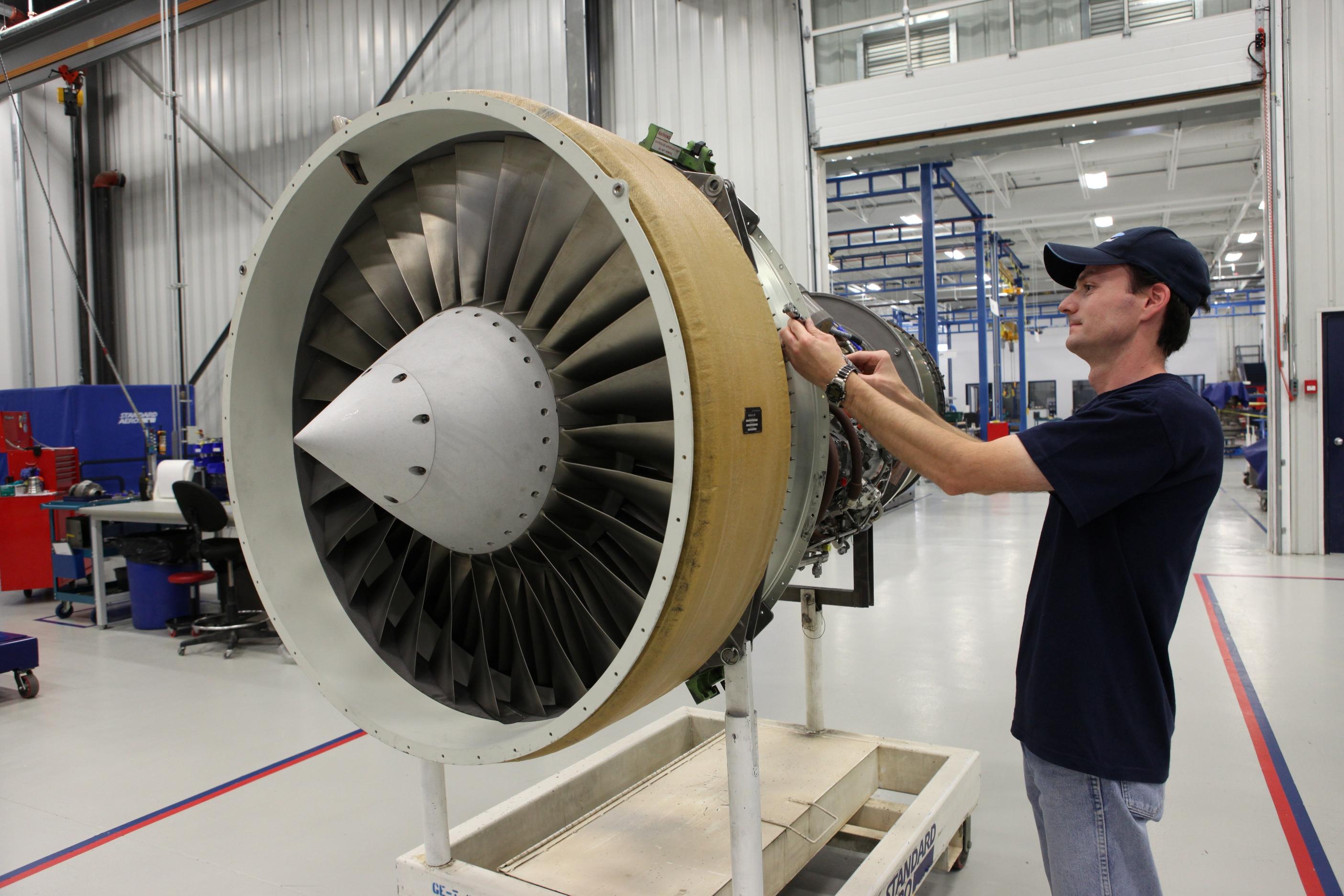StandardAero Completes Its 3,000th GE CF34 MRO, Sees Continuing Demand

StandardAero celebrated the completion of its 3,000th GE CF34 engine workscope in February, with the delivery of the engine to long-time customer SkyWest Airlines. The engine, a CF34-8C5B1, powers a Bombardier CRJ 700 regional jet, operated by the St. George, Utah-based carrier.
According to David Green, vice president and general manager, CF34/CFM56 for StandardAero’s Airlines and Fleets Division, the Scottsdale-headquartered company has been a GE Aviation Authorized Service provider on both the CF34-3 and CF34-8 since 2001. Today, StandardAero services approximately 20% of the global CF34 market.
The CF34-3 powers Bombardier’s CRJ 100/200 series of 50-seat regional jets, as well as six of the OEM’s Challenger business jets—the 601, 604, 605, 650, 800 and 850. The CF34-8 application is the CRJ 700, 900/ and 1000 family of 70-100 seat regional jets, along with the 50-seat CRJ550 variant, as well as the 70-seat Embraer E170/175 regional jets. The Challenger 870 also uses CF34-8 power.
“Current market forecasts suggest that CF34-3/-8 MRO demand will remain robust until the end of the current decade,” says Green, who cites slow sales and delayed entry into service of NextGen regional jets, such as the Mitsubishi SpaceJet, and the Embraer E175 E2—both powered by the Pratt & Whitney geared turbofan family. “As such, the current in-service fleet of approximately 6,000 CF34-3/-8 engines is likely to continue serving airline passengers and business jet travelers for several decades to come.”
But Green also predicts that, over that time frame, the higher growth rate for CF34 MRO will shift to the -8, given the general trend toward larger regional jets. However, low fuel prices in combination with the Essential Air Service program in the US, should assure continued operation of the 50-seat jets for some time and a market for CF34-3 service.
StandardAero’s approvals for the two CF34 engine types range from line inspections to overhauls, Green says. “Workscopes performed include life limited parts changes, performance restorations, foreign object damage repairs, hot section inspections, field services, module replacements and model conversions,” he explains.
StandardAero, he points out, processes over 250 CF34s annually, and has made “significant investments in its CF34 capabilities” over the past 20 years. They include a two-engine test cell at Winnipeg, MB, incorporating the latest computerized engine performance monitoring technologies; and a dedicated in-house CF34 component repair capability, drawing on the expertise of StandardAero Component Services. CF34 line replaceable unit (LRU) and engine health monitoring services were also added.
“While the majority of our CF34 work is performed in Winnipeg in our (164,000 ft.2) CF34/CFM56 shop, we also do some supporting CF34 module-level activity in Maryville, TN, along with component-level activity in Cincinnati, OH,” says Green. StandardAero, he adds, also supports operators through its global field service team. “The team recently completed a CF34-8 high pressure turbine (HPT) blade change campaign for seven different operators across three continents. Our Business Aviation team also offers CF34 GE Authorized Line Service maintenance throughout our North American facilities at Augusta, Georgia; Houston, Texas and Springfield, Illinois.”
